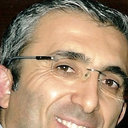Thymomas in childhood: 11 cases from a single institution.
Keywords
Abstract
OBJECTIVE
Thymomas are rare in children. Our aim was to review clinical and pathologic characteristics and outcome in children with thymomas.
METHODS
Between 1979 and 2011, 11 children with thymomas were diagnosed. Hospital files were reviewed for presenting complaints, clinical, radiologic, and other laboratory data, surgical practices, chemotherapy and radiotherapy outcomes.
RESULTS
Median age was 8 years (range, 1 to 13 y). Male to female ratio was 9/2. Most common initial complaints were dyspnea, cough, chest pain, and fever. Median time from onset of symptoms was 1 month (range, 0.23 to 3 mo). Associated conditions including hyper-IgE syndrome, hypogammaglobulinemia, and systemic lupus erythematosus plus idiopathic thrombocytopenic purpura were present in 3 patients. Chest x-rays and/or thoracic computed tomographies displayed thymic hyperplasia and/or masses in anterior mediastinum accompanied by pleural (n = 2) and pericardial effusions (n = 1), pulmonary metastases (n = 1), and cervical lymph node metastasis (n = 1). Compression or invasion of trachea or vessels was documented in 5 cases. Seven cases underwent initial tumor resection; others experienced open or trucut biopsies. Histopathologically, 5 cases had invasive and 6 had benign thymomas. Benign thymomas did not receive any postoperative treatment; all cases are disease free at a median follow-up of 211 months. Three of 5 cases with invasive thymomas underwent surgery, 4/5 received chemotherapy and external radiotherapy (3600 to 4500 cGy). Two invasive thymomas died of disease. Three cases with invasive thymomas are disease free at a median follow-up of 209 months.
CONCLUSIONS
Benign thymomas have excellent prognosis. For invasive thymomas with or without metastasis, radiotherapy, and chemotherapy offers survival advantage. Complete surgical resection may increase chances for cure.




